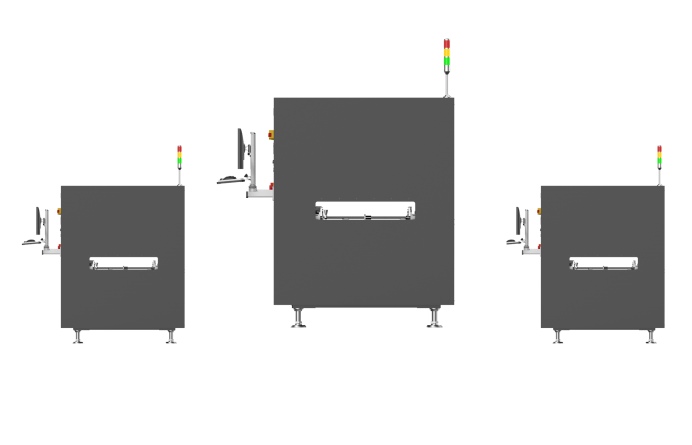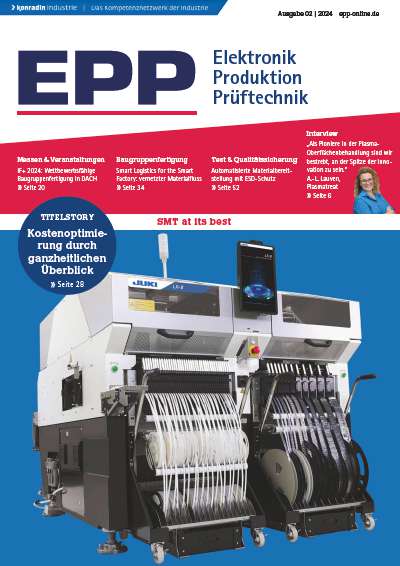Manufacturers that use bare dies or flip-chips have access to a wide variety of advanced assembly methods that will produce high yield, high reliability systems. In this review of typical assembly techniques we consider the aspects of die attach, interconnect, seal and encapsulation along with factors that are important to the process development.
National Semiconductor
Die attach methods
With this category of assembly technique, either an epoxy-based adhesive or metal-filled glass is commonly used to attach die to a substrate.
Thermoset adhesive – Widely used fordirect-chip attach, multi-chip modules, and plastic packaging. All of current National’s die can be used in this method. These adhesive materials have a low cure temperature, low modulus of elasticity, high strength, a wide process window (bond line, cure time), and are relatively inexpensive. Their disadvantages include resin bleed, a lower level of thermal and electrical conductivity, limited rework-ability and limited internal water vapor (Residual gas analysis, RGA) performance. When using thermoset adhesives, particular consideration must be given to the cure profile, bleed-out evaluation, material compatibility, design rules, pot life and storage, dispensing considerations (patterns/voiding), bond line control and placement accuracy/planarity.
Thermoplastic adhesive – Used in high-value modules where rework must be an option; ideal for attachment of very large die (such as National’s Geode microprocessors) where thermal expansion mismatches are unacceptable. Thermoplastic adhesives also offer a low cure temperature, a low modulus of elasticity, andare relatively inexpensive. However, where there is limited reworkability with the thermoset, the thermoplastic adhesive is rework-able. Their disadvantages include limited bond strength, lower electrical and thermal conductivity, limited RGA performance, and the need formore manufacturing logistics in handling. When using thermoplastics, consider the need for greater force when attaching the die, placement accuracy/ planarity/bond line requirements, and an awareness of the thermal hierarchy.
Metal-filled glass – For use in ceramic packaging that requires a high temperature hermetic seal. Many of National’s enhanced solutions products are qualified for high reliability applications. When higher reliability is needed, such as in applications where there are temperature extremes or where other harsh environmental aspects must be considered, metal-filled glass is often used for die attach. It provides high thermal and electrical conductivity, high temperature tolerance, excellent RGA, strength, and a midrange modulus of elasticity. Disadvantages are that it adds to the cost, requires bond line control, is non-reworkable, requires fillet control, has die size limitations, and requires a high temperature organic burn-out. To take full advantage of its benefits, care must be taken to ensure bond line control, a proper OBO (organic burn-out) profile, dispense control (to prevent voiding), placement accuracy and die size compatibility. The user must ensure the metallurgy of the die backside is compatible with the metal-filled glass material.
Au-Si (gold-silicon) eutectic – Used in high-reliability hybrid and ceramic packaging where a high-temperature hermetic seal is needed. Here, too, National’s enhanced solutions meet the need for robust performance. The gold-silicon eutectic process is also used in the manufacture of higher reliability systems. It offers the advantages of high thermal and electrical performance, greater strength, low RGA, a high temperature tolerance, and is more reworkable than the metal-filled glass material. Like this, the gold-silicon eutectic process has a higher cost and is limited in the size die that can be used. It has a high modulus of elasticity, potential for chip damage, requires a high process temperature, and has a narrow process window. Process considerations include the process pro-file, an environment consisting of N2 or N2/H2, die size, metallurgy (type and oxidation), voiding and collet size/design.
Soft solder – It is a hybrid packaging of which National provides a full portfolio of die products. Like the gold-silicon eutectic, the soft solder process has been used with hybrid packaging. It offers good thermal and electrical performance, is reworkable, and provides good matching for dissimilar TCEs (thermal coefficient of expansion). However, it does require a special backside metallization. An N2 or N2/H2 atmosphere is required and die placement issues (such as movement during reflow) warrant monitoring. Process considerations include monitoring the level of O2 in the process atmosphere, oxidation on surfaces, solder splash during placement and voiding.
Interconnect methods
Interconnect methods for die assembly use wires or solder bumps to electrically connect the die to the substrate.
Gold-ball bonding – For use in high-reliability applications and plastic packages. National delivers a full portfolio of die products. Gold-ball bonding provides high throughput, high strength, omni-directional coverage and fine-pitch capability. These advantages are contrasted with the need for an elevated temperature to perform this wire-bond assembly coupled with increased material cost and the potential for unwanted inter-metallic issues. Process considerations when using this method include the high temperature, power, force, time, wire diameter and length, metallurgy issues, pitch, bonding surface conditions and the bonding area.
Aluminum-wedge bonding – Widely used for interconnects on direct chip attach and ceramic packaging. National has a full portfolio of enhanced solutions die products for high reliability applications. While aluminum-wedge bonding offers the advantages of room temperature processing, a lower material cost (wire) and fine-pitch capability, it is at the cost of a decrease in strength and throughput. This method is not optimum for hermetic applications. When using this bonding technique, following process issues have to be considered: power, force, time, wire diameter, wire length, metallurgy, pitch, bond angle, forward and reverse bonding, bonding surface conditions and the bonding area.
Flip-chip eutectic solder – Used with modules or chip-on-board where traditional interconnect methods cannot provide the electrical or physical performance. National offers eutectic solder bumps for flip-chip requirements. Of all of the interconnect methods, perhaps solder flip-chip provides the best electrical performance, smallest footprint and reliability. It is also reworkable. Disadvantages include the need for underfill, the requirement of high density PCBs, and an infrastructure to support this die assembly method. When considering this process, evaluate the reflow profile, underfill approach, placement accuracy, bump/UBM metallurgy, substrate design and materials, CTE and thermal hierarchy.
Seal and encapsulation methods
In addition to the die assembly techniques by wire, adhesive or direct attach, the seal and encapsulation techniques add a protective covering to the die and interconnects.
Hermetic (Seam seal) – Primarily used in hermetic or high-reliability multi-chip modules. Nation-al supplies high-reliability die products. Using this die assembly meth-od provides a hermetic solution, large seal area, and low profile with low temperature processing and minimal manufacturing floor space requirements. Not being a batch process, low throughput is one of the drawbacks of seam seal. Process considerations include electrode design, lid design, and the need for a dry box environment.
Non-hermetic (glob top) – Commonly used in direct-chip attach applications. National provides a full portfolio of these die products for all applications. The glob-top process is flexible, has a low temperature cure, provides low stress and a low profile. Its non-hermetic aspects, however, provide limited protection to the die, and there is the potential for spread and wire wash. If using this method, process considerations include dispensing parameters, viscosity issues, cure time and possible need for a dam.
www.national.com/appinfo/die
EPP 191
Zusammenfassung
Keine Frage, die Prozeduren für das Halbleiter-Packaging werden fortlaufend weiterentwickelt und verfeinert, erfahren dabei Änderungen und glänzen somit durch eine Fülle von Variationen. Dennoch kann man die Methoden für die Gehäuse- und Anschlußtechniken in drei Hauptbereiche unterteilen, die sich durch gemeinsame Vor- und Nachteile unterscheiden. Es handelt sich um Direct-Chip-Attach (DCA), Interconnection-Verfahren mit Drahtbonding oder Solder-Bumps sowie die Versiegelung und Encapsulation (Glob-Top).
Résumé
Il ne fait aucun doute que les procédures de conditionnement des semi-conducteurs évoluent et s’améliorent sans cesse, subissent de ce fait des modifications et se caractérisent par un grand nombre de variantes. Néanmoins, les méthodes appliquées aux techniques des boîtiers et des connexions peuvent être classées en trois grandes catégories qui se distinguent par des avantages et des inconvénients communs. Il s’agit de Direct-Chip-Attach (DCA), de la méthode d’interconnexion utilisant le bonding par fil ou Solder-Bumps et le scellement ou Encapsulation (Glob-Top).
Sommario
È chiaro che le procedure per il Packaging di semiconduttori vengono continuamente sviluppati ed affinati, subendo modifiche che permettono loro di offrire un grande numero di varianti. Nonostante ciò è possibile suddividere i metodi per le tecniche di alloggiamento e di collegamento in tre gruppi principali, caratterizzati da comuni vantaggi e svantaggi. Essi sono il Direct-Chip-Attach (DCA), il processo Interconnection con Bonding dei fili o con Solder-Bumps e la sigillatura ed Encapsulation (Glob-Top).
Unsere Webinar-Empfehlung
10.10.22 | 10:00 Uhr | Conformal Coating ist ein wichtiges Verfahren, um elektronische Baugruppen vor dem vorzeitigen Ausfall zu schützen. Damit bekommt der Beschichtungsprozess eine immer höhere Bedeutung. Dabei ist die Auftragsstärke ein wichtiges Qualitätskriterium. Nur eine…
Teilen:














